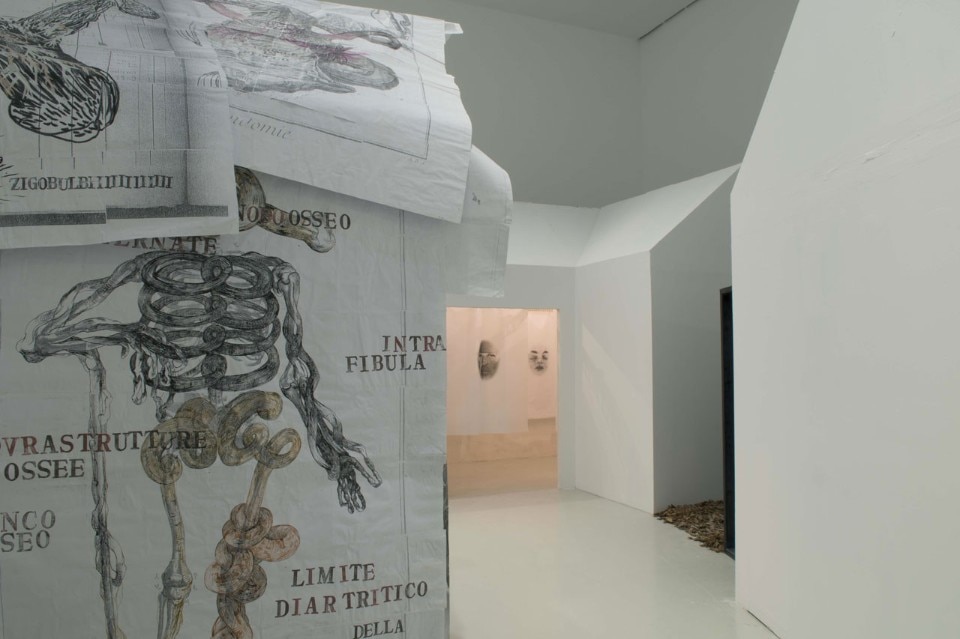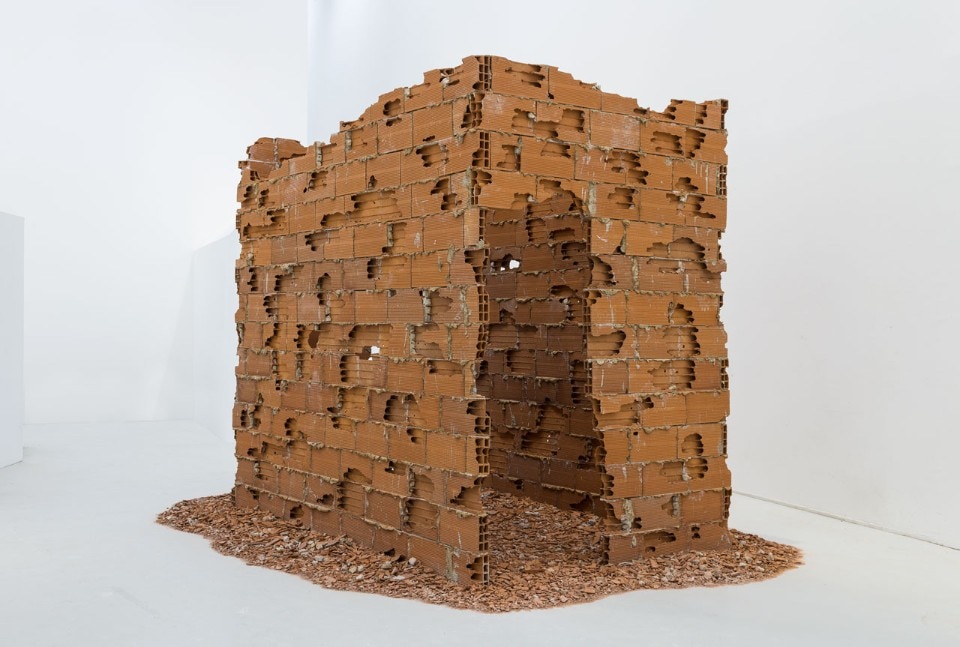
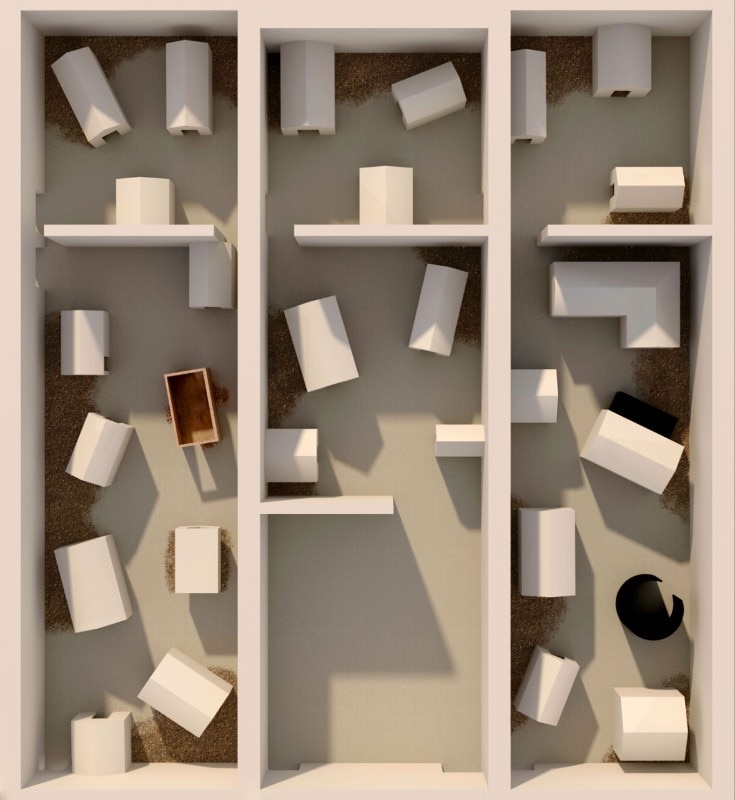
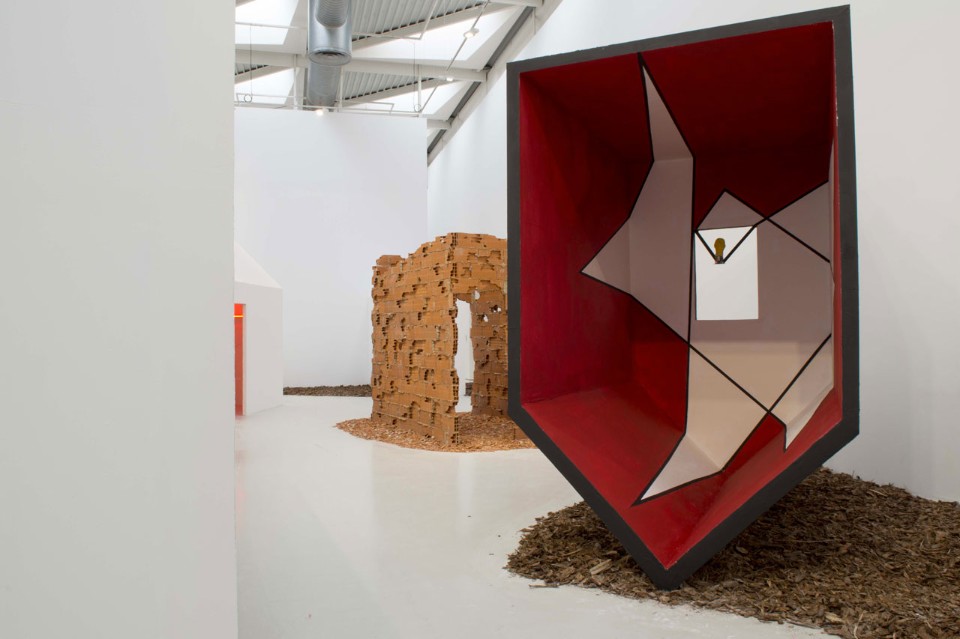
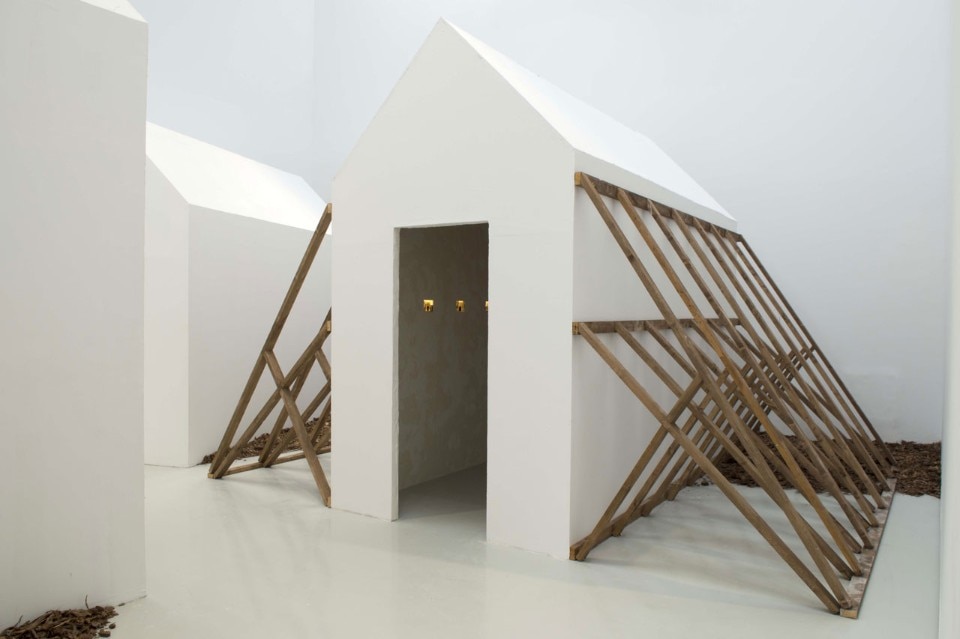
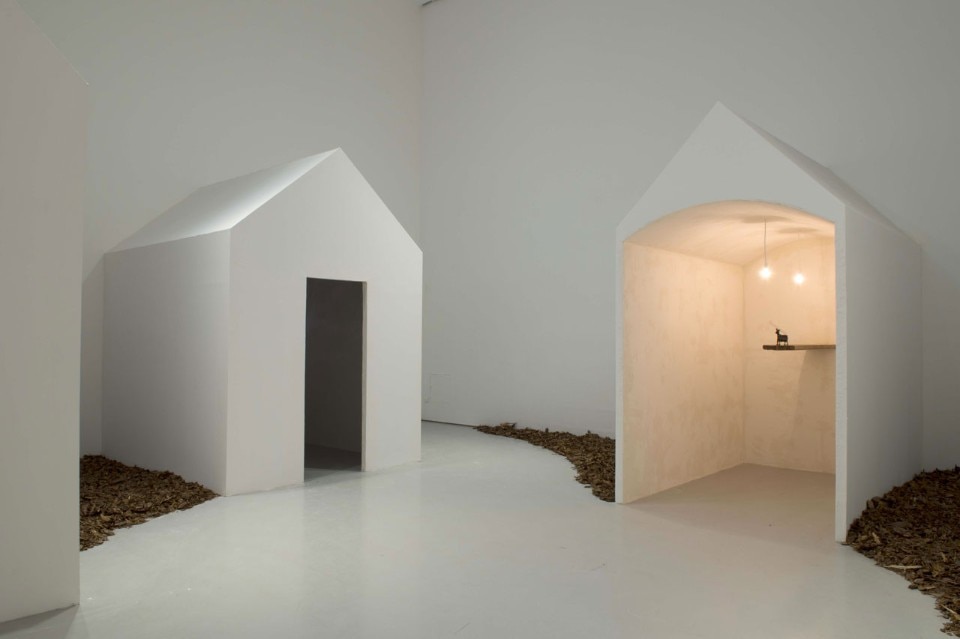
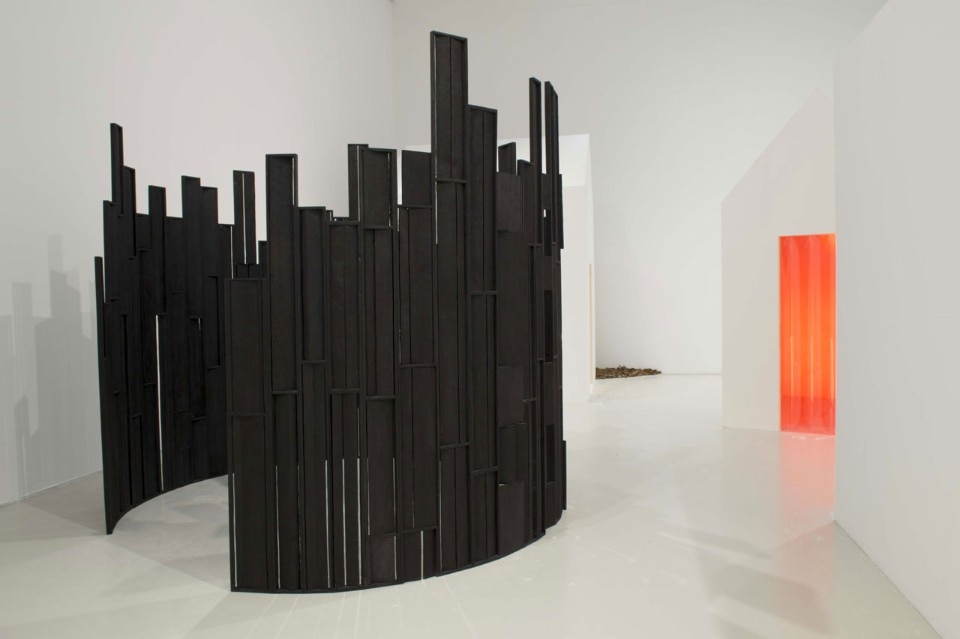
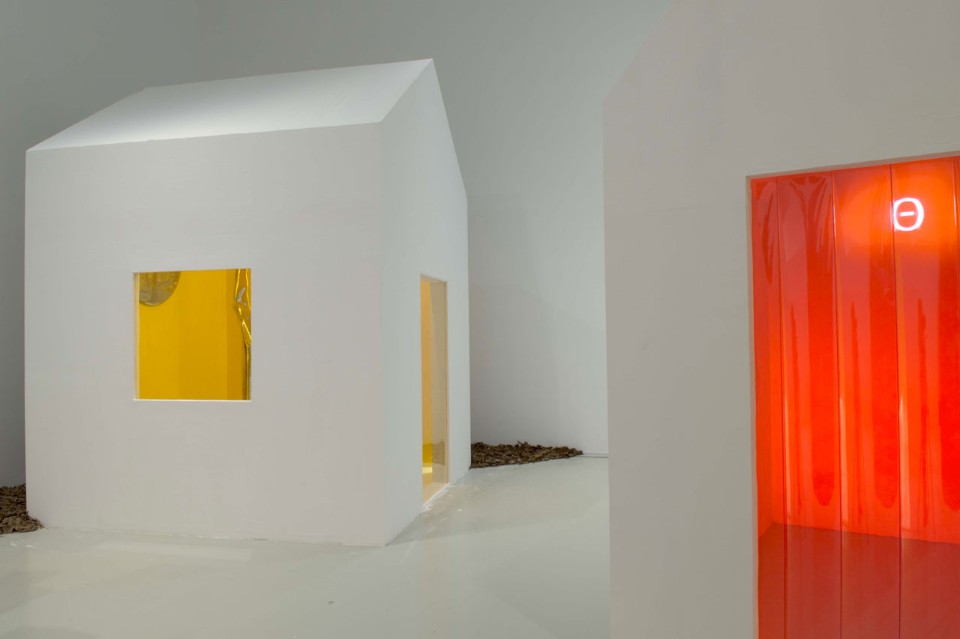
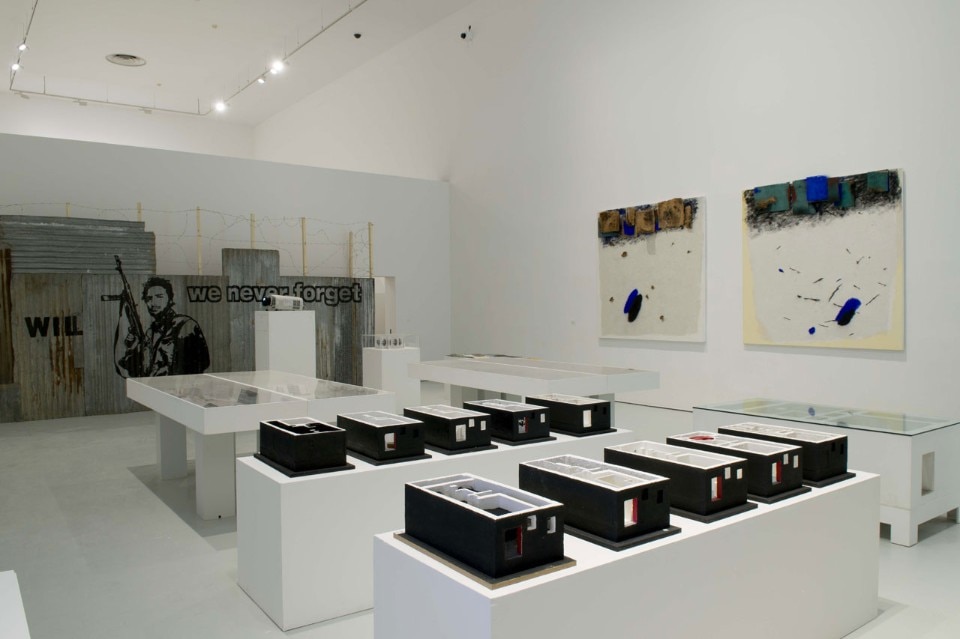
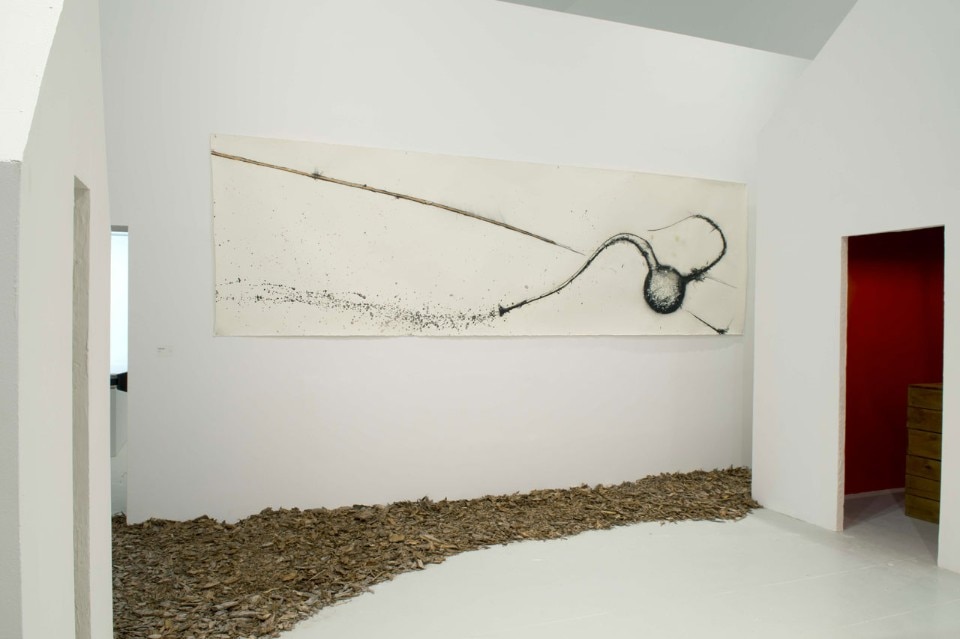
The work by Cabrita Reis might be interpreted as the materialisation of a desire to escape prison walls. The bricks, products par excellence of a rational world, become receptacles of its extremes.
Conversely, the vast majority of the artists who agreed to stay inside the territory conceived by Gianluca Nucci found themselves confronted with a sudden solemnity of immaculate space. Gregorio Botta for example delivered one of the most sensitive works, whose introspective impact mingled with the desire to participate while using universal forms. The Circolo d’acqua shown at VOLUME! in 2009 “sprang first of all from my obsession with circles and circularity, but what strikes me most is the possibility of painting using only light. So that the reflection of light on the wall creates this ring which is there, like breathing and its rhythm. The water stops, and moves. The intention was to look for a place, a slightly metaphysical yet inaccessible spot. You see it but you can’t enter. As if it was a living organism”. In Saint-Étienne, the maisonette becomes almost a temple: “To me, now it is actually a different work. As if it had added an atmosphere of sacrality which at VOLUME! wasn’t there. Here there is the sacred summit that manages to be essential”.
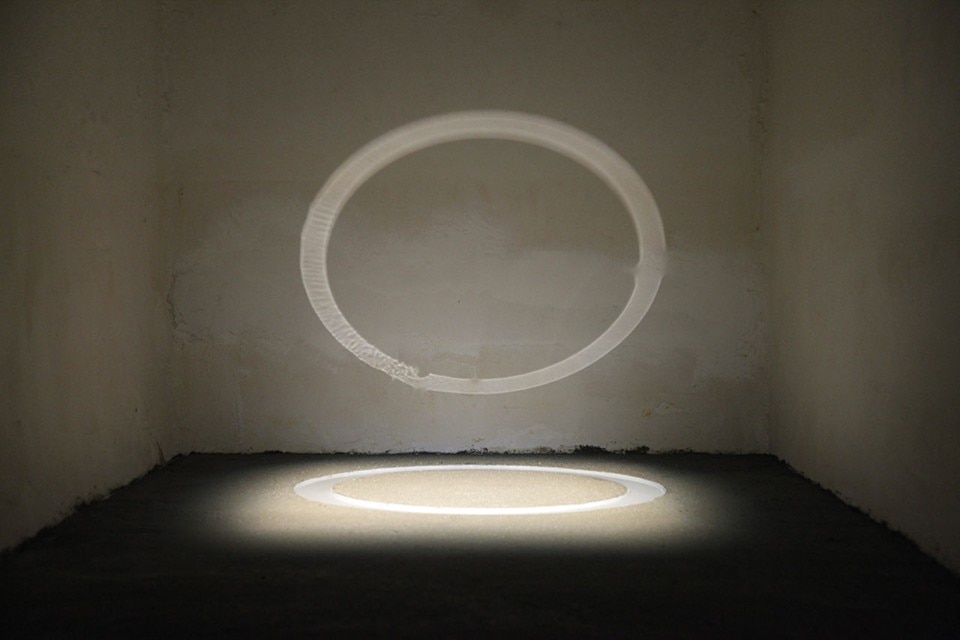
until 20 January 2016
Fondazione VOLUME! – Passaggi
MAMC – Musée d’art moderne et contemporaine Saint-Etienne

